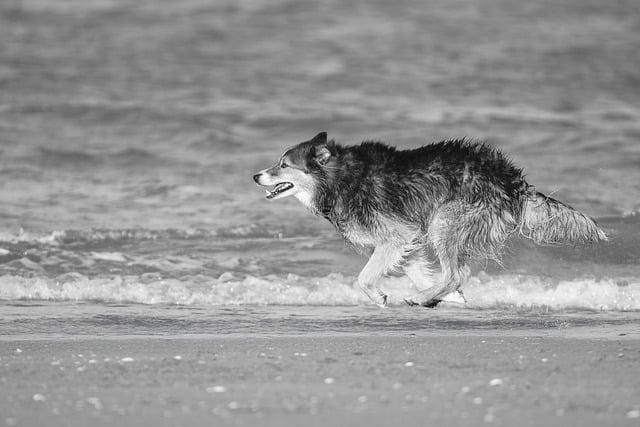In the heart of the Himalayas, a giant named the Tibetan Mastiff roams. Known for its impressive size and majestic mane, this breed stands as a guardian of ancient monasteries, embodying strength and loyalty. Weighing up to 150 pounds and towering over most dogs, the Tibetan Mastiff is not just a pet; it’s a protector and a symbol of cultural heritage. Imagine having a companion that commands respect and admiration wherever you go. If you seek a dog that combines beauty, brawn, and a rich history, the Tibetan Mastiff is your answer. Embrace the extraordinary!
Contents
- Understanding the Characteristics of the Largest Asian Dog Breed
- Exploring the Historical Significance and Cultural Impact of the Breed
- Evaluating the Care and Maintenance Needs of This Majestic Canine
- Making an Informed Decision: Is This Dog the Right Fit for Your Lifestyle?
- Q&A
Understanding the Characteristics of the Largest Asian Dog Breed
The largest dog breed originating from Asia is renowned for its impressive size and striking appearance. These majestic canines often weigh between 90 to 150 pounds and stand tall at 26 to 34 inches at the shoulder. Their robust build and powerful stature make them not only a sight to behold but also a formidable presence in any environment. With a thick double coat that can vary in color, these dogs are well-adapted to various climates, showcasing their resilience and versatility.
One of the most notable characteristics of this breed is its **loyalty** and **protective nature**. They are known to form strong bonds with their families, often becoming devoted guardians. This breed is particularly alert and will not hesitate to defend their loved ones from perceived threats. Their natural instincts make them excellent watchdogs, as they are both vigilant and courageous. However, this protective trait requires responsible ownership and proper training to ensure they are well-socialized and comfortable around strangers.
In addition to their loyalty, these dogs possess a unique **intelligence** that can be both a blessing and a challenge. They are quick learners but can also exhibit a stubborn streak, making consistent training essential. Engaging them in various activities, such as obedience training and agility exercises, can help channel their energy positively. Their intelligence also means they thrive in environments where they can be mentally stimulated, so providing them with interactive toys and challenges is crucial for their well-being.
the breed’s **temperament** is another key characteristic that potential owners should consider. While they are generally calm and composed, they can be playful and affectionate with their families. Early socialization is vital to ensure they develop a well-rounded personality. With the right guidance, these dogs can be gentle giants, making them wonderful companions for families and individuals alike. Understanding these traits will help prospective owners appreciate the unique qualities of this magnificent breed and prepare for a fulfilling relationship with their new canine companion.
Exploring the Historical Significance and Cultural Impact of the Breed
The largest dog breed originating from Asia, the Tibetan Mastiff, carries with it a rich tapestry of history and cultural significance. This majestic breed was traditionally used by nomadic cultures in the Himalayas to protect livestock from predators, showcasing its role as a guardian and protector. The Tibetan Mastiff’s imposing stature and fierce loyalty made it a revered companion among Tibetan herders, symbolizing strength and resilience in the face of harsh environmental conditions.
Throughout history, the Tibetan Mastiff has been more than just a working dog; it has also been a status symbol among the elite. **Monks and nobility** in Tibet valued these dogs not only for their protective instincts but also for their ability to command respect. The breed’s presence in ancient texts and folklore highlights its esteemed position in society, often associated with spiritual significance and revered as a guardian of sacred spaces. This cultural reverence has contributed to the breed’s mystique and allure, making it a sought-after companion in modern times.
The impact of the Tibetan Mastiff extends beyond its historical roots; it has influenced various aspects of popular culture and contemporary dog breeding. **Art, literature, and film** have all drawn inspiration from this magnificent breed, portraying it as a symbol of loyalty and bravery. As the breed gained popularity in the West, it sparked interest in responsible breeding practices and the importance of preserving its unique characteristics. This cultural exchange has not only elevated the breed’s status but has also fostered a greater appreciation for the diverse canine heritage found across Asia.
In addition to its cultural significance, the Tibetan Mastiff embodies the values of companionship and protection that resonate deeply with dog lovers today. Its majestic appearance and gentle demeanor make it a beloved family pet, while its historical role as a guardian continues to inspire admiration. As we explore the legacy of this remarkable breed, we recognize its profound impact on both the communities it has served and the hearts of those who cherish its presence in their lives.
Evaluating the Care and Maintenance Needs of This Majestic Canine
When considering the care and maintenance of one of Asia’s largest dog breeds, it is essential to understand their unique needs and characteristics. These majestic canines require a dedicated owner who can provide not only physical care but also mental stimulation. Regular exercise is crucial, as these dogs are known for their strength and energy. Daily walks, playtime, and opportunities to run in a secure area will help keep them healthy and happy.
Nutrition plays a vital role in the overall well-being of these impressive dogs. A balanced diet tailored to their size, age, and activity level is necessary to maintain their health. Look for high-quality dog food that lists meat as the primary ingredient and is free from fillers and artificial additives. Additionally, consider consulting with a veterinarian to determine the best dietary plan, as these breeds can be prone to certain health issues that may require specialized nutrition.
Grooming is another important aspect of their care. Depending on the specific breed, coat maintenance can vary significantly. Regular brushing is essential to prevent matting and reduce shedding, while occasional baths will help keep their coat clean and healthy. Pay attention to their ears, teeth, and nails, as these areas also require regular care to prevent infections and other health problems. Establishing a grooming routine early on will make the process easier for both you and your dog.
Socialization and training are critical components in raising a well-adjusted and obedient large dog. Early exposure to various environments, people, and other animals will help them develop confidence and reduce the likelihood of behavioral issues. Positive reinforcement training methods are highly effective, as they encourage good behavior while strengthening the bond between you and your canine companion. Investing time in training and socialization will pay off in the long run, resulting in a loyal and well-mannered pet.
Making an Informed Decision: Is This Dog the Right Fit for Your Lifestyle?
When considering adding a new canine companion to your home, it’s crucial to evaluate how well a dog’s characteristics align with your daily routine and living situation. Large breeds, such as the **Mastiff** or **Tibetan Mastiff**, can be particularly demanding in terms of space, exercise, and care. If you lead a busy lifestyle or live in a smaller apartment, a giant breed may not be the best choice. Assess your living environment and ensure it can accommodate a dog of this size comfortably.
Another important factor is the amount of time you can dedicate to training and socialization. Large dogs often require consistent training to manage their strength and energy levels. Breeds like the **Korean Jindo** or **Shikoku** are known for their intelligence and loyalty, but they also need firm guidance to thrive. If you’re unable to commit to regular training sessions, consider whether a smaller or less demanding breed might be a better fit.
Exercise requirements are another key consideration. Many of the largest Asian breeds, such as the **Akita** or **Chow Chow**, need ample physical activity to stay healthy and happy. If you enjoy outdoor activities like hiking or running, a large dog could be a wonderful companion. However, if your lifestyle is more sedentary, you might want to explore breeds that are less active or have lower exercise needs.
think about your family dynamics and any existing pets. Some large breeds can be protective or territorial, which may not mesh well with young children or other animals. Understanding the temperament of the breed you’re considering is essential. Researching the specific needs and behaviors of breeds like the **Shiba Inu** or **Tibetan Mastiff** will help you make a well-rounded decision that benefits both you and your future furry friend.
Q&A
-
What is the biggest dog breed from Asia?
The biggest dog breed from Asia is the Tibetan Mastiff. Known for its impressive size and strength, this breed can weigh between 90 to 150 pounds and stand up to 30 inches tall at the shoulder.
-
What are the characteristics of the Tibetan Mastiff?
The Tibetan Mastiff is renowned for its thick double coat, which provides insulation against harsh weather. They are also known for their protective nature, loyalty, and independence, making them excellent guardians for families and property.
-
How much exercise does a Tibetan Mastiff need?
Despite their large size, Tibetan Mastiffs do not require excessive exercise. A couple of daily walks and some playtime in a secure area are usually sufficient to keep them healthy and happy. However, they thrive in environments where they can roam and explore.
-
Are Tibetan Mastiffs good family pets?
Yes, Tibetan Mastiffs can be great family pets, especially for families with older children. They are protective and loyal, but early socialization and training are crucial to ensure they are well-adjusted and comfortable around other pets and strangers.
the Tibetan Mastiff stands as Asia’s largest dog, embodying strength, loyalty, and a rich cultural heritage. Choosing this majestic breed not only enhances your home but also connects you to a legacy of guardianship and companionship. Embrace the grandeur!




